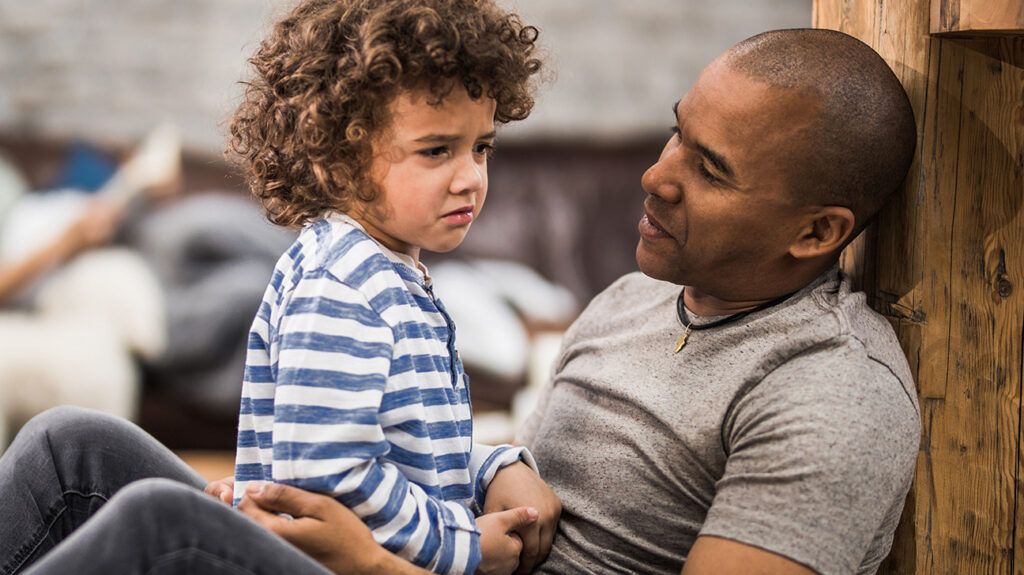Parenting a child with reactive attachment disorder can be exhausting and heartbreaking. Through the distress, know that healing is possible.

Most of us don’t realize the extent to which we rely upon the attachments we’ve made, probably because those attachments come so naturally. For individuals living with reactive attachment disorder, forming healthy attachments can seem like a foreign concept.
Typically due to a history of abuse and neglect in early childhood, those connections that seem to come so easily to others may feel completely out of reach to someone living with a reactive attachment style.
Reactive attachment disorder (RAD) happens when a young child is unable to form a bond with their caregivers. They rarely seek comfort for distress, show positive emotions less often, and display irritability, sadness, or fear when in contact with their caregivers.
With treatments such as psychotherapy, help and support are available.
The overlap of symptoms with other conditions means that a comprehensive psychiatric evaluation should occur before moving forward with treatment.
A history of abuse and neglect doesn’t mean that RAD is inevitable. But once RAD has been confirmed by a qualified psychiatric professional, an individualized treatment plan can be made.
Treating RAD in children usually means involving the child and their current caregivers in the treatment process. This is because the goal is to help the child form a healthy attachment throughout the treatment process.
Treatment plans may vary based on the person’s age, history, and current living circumstances, but there are three types of therapy that are most often used:
- behavior management training (BMT)
- attachment therapy
- play therapy
BMT typically takes place over the course of
Attachment therapy sessions include parent education and skills training, family-focused counseling, and child education and training.
This therapy helps the child to receive nurturing from the caregiver. Holding therapy is common, where the caregiver holds the child across their lap, similar to how they would hold an infant, under the guidance of a mental health professional.
Finally, play therapy involves using play to help children better understand some of their attachment issues and to develop tools for improving their behavior, communication, and ultimately, attachment style.
Depending on the extent to which RAD is impacting a child’s behavior and the family’s overall functioning, a mental health professional may prescribe psychotropic medication.
One of the most important things caregivers can do to help children diagnosed with RAD is to play an active role in their treatment program. After all, treatment for RAD often involves the whole family, and caregivers are taught many valuable skills throughout the treatment process.
Learning more about RAD can also help.
Because children with RAD often display disruptive behaviors, parenting these children can be difficult. But by taking the time to better understand the root of those behaviors, parents can learn how to step back and breathe as those behaviors play out.
This is much easier to do when you remember the behaviors truly aren’t a reflection of you.
Parents may also want to consider getting therapy themselves, or joining a support group for parents of children with RAD.
This type of self-care, and the reminder that you aren’t alone, can provide you with the support and resources you may need to work though even the toughest challenges that may come. And it can give you a sounding board of other parents facing similar challenges as you.
The Reactive Attachment Disorder (RAD) Parent Support Group is a great place to start.
Finally, the best way caregivers of children with RAD can help those children is by continuing to show up. RAD is most often the result of neglect and abuse in early childhood. These kids were never taught what a healthy attachment looks like.
By bringing them to treatment, involving yourself in that treatment, and using what you’ve learned to continue showing up for the child, you are proving to them (however slowly it may seem) that they can count on you to love them no matter what.
And that is perhaps the most important piece of the puzzle they need to begin healing.
Early childhood abuse and neglect doesn’t just impact children. The wounds of these experiences can follow those children into adulthood, particularly if treatment in childhood never happens.
But it’s never too late for treatment to begin.
While there is no official diagnosis for attachment issues in adulthood, it is understood that symptoms of RAD and other attachment disorders can linger into adulthood.
Treatment in adulthood typically involves trying to learn a healthier attachment style.
This generally takes place alongside a therapist who can help you to explore and better understand your childhood experiences. As you do that work, your therapist will also help you identify unhealthy attachment patterns you may be repeating, while teaching you healthier ways of connecting.
A history of abuse and neglect can be devastating to both the child and the caregivers who have come to love that child. But it’s important to remember that the human brain is resilient. In fact, attachment disorders most often occur because the human brain is simply trying to help that child survive an untenantable situation.
And a brain that is capable of adapting in such a way is most certainly capable of healing.
If you or someone you love is parenting a child with suspected RAD, or is an adult living with suspected attachment issues, the first step is finding a mental health professional who can help.
The American Psychological Association and the American Psychiatric Association have search tools that can locate mental health professionals in your area who specialize in attachment issues.
It is human nature to connect, bond, and form attachments. Just because a poor start in life has inhibited that natural inclination doesn’t mean it can be reawakened.
RAD is treatable. And it’s certainly not something you have to tackle alone.
